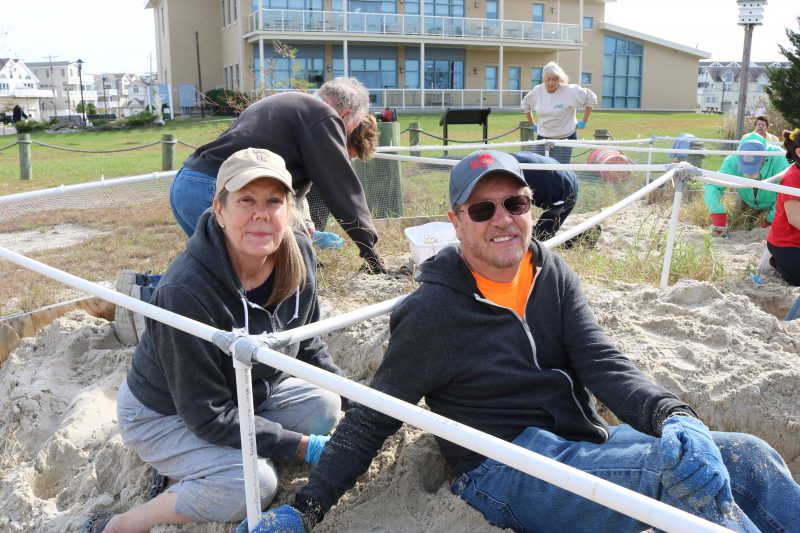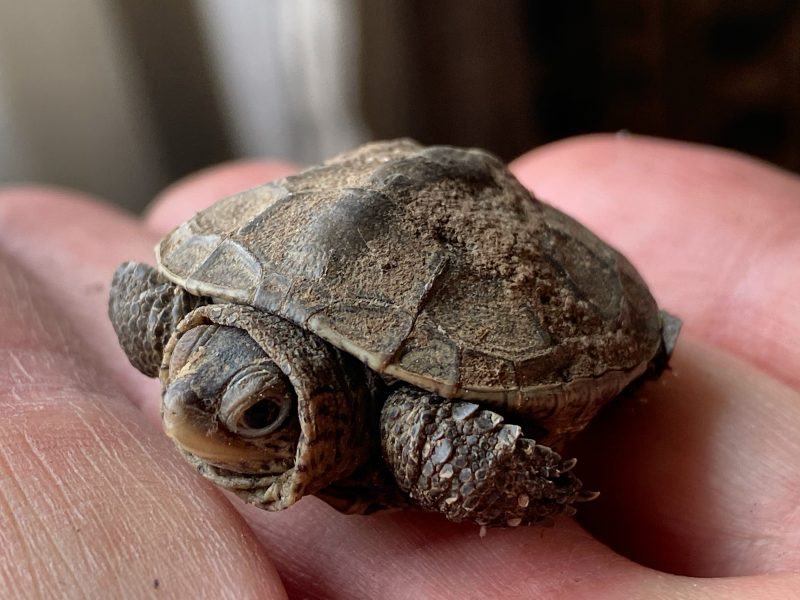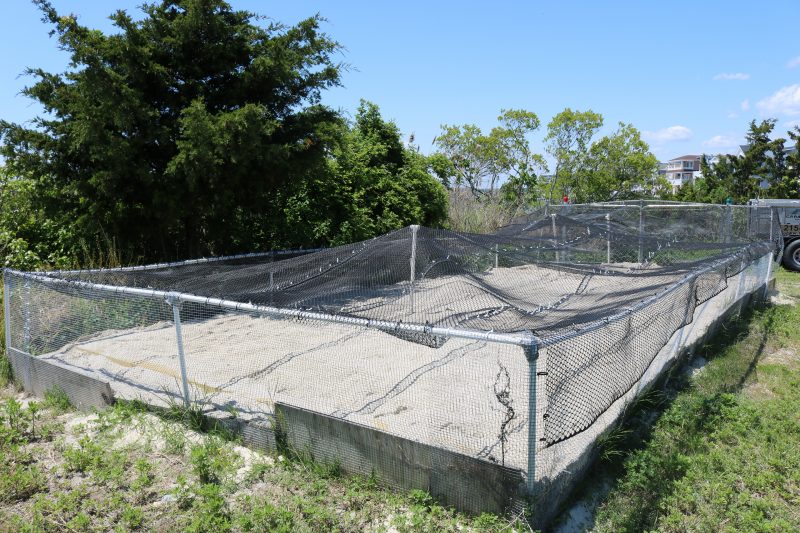
By BILL BARLOW
They are out there, waiting for the right moment, and the moment is coming soon.
Within a week or so, diamondback terrapins will leave the back bay waters in search of places to nest. When they do, Steve and Susan Ahern will be ready.
“We call ourselves Sea Isle City Terrapin Rescue,” Steve Ahern said in an interview.
The married couple form the core of local volunteer efforts to protect the turtles, which search for places to lay their eggs just as the summer traffic begins to get busy.
There are already some baby turtles making their way through gardens and across lawns. According to Ahern, the tiny turtles that many find in the first warm days of spring are from last year’s eggs. They’re about the size of a half-dollar and the odds are stacked against them.
Biologists have told Ahern that only about three of every 3,000 diamondback terrapin hatchlings survive to adulthood. The ones that are heading to the marsh right now have already beaten some of those bad odds, managing to leave the nest. Raccoons, foxes, skunks and a variety of other animals relish turtle eggs, often digging up the nests soon after the mother turtle leaves.
Ahern, an attorney, said he and his wife began vacationing in Sea Isle in the 1970s. They moved to the area year-round in 2007 and first started volunteering to help the turtles in 2008. By 2009, they were working hard to protect the animals.
“When we moved down here, we realized how big of a plight they have,” he said. “They’re very determined. Very resilient. I don’t know how they survived down here. We’ve really become obsessed.”

As the water temperature warms, the females leave the bay to lay their eggs. They may lay three clutches in a season, which can mean three waves of turtles crossing yards and roadways.
“We generally don’t see the females come out until right around the last week of May,” Ahern said. After that, the animals will be around for about eight weeks.
“It will start a little slow and then you get a rush that first week,” he said.
The turtles come to every shore town and can be seen crossing the marshy causeways leading to the barrier islands. But Sea Isle seems to get a lot more than other towns. Ahern believes it is because there are many areas without bulkheads, allowing the turtles to walk out of the marsh more easily.
Sea Isle appears to welcome them. The city’s mascot is Sarah the Turtle, and for years the city hosted a Sarah the Turtle festival. The Sea Isle City Environmental Commission sells “Save a Turtle” T-shirts to raise funds.
There are also multiple signs throughout town warning drivers to watch out for turtles. According to Ahern, the animals have a better time when traffic is very heavy on a summer weekend. There are usually enough motorists in the mix who know to watch out for the diamondbacks and most people are driving slowly.
On a quiet weekend in June, someone may be driving faster and not watching as carefully. Even though there have been extensive education campaigns for years, Ahern said many visitors don’t know about the nesting season.
“The people that live here, they know it. It’s the people that don’t live here. They just don’t know what’s going on with the turtles,” he said.

The Aherns and other volunteers patrol regularly for the animals during the nesting season. An injured turtle will be transported to The Wetlands Institute just outside Stone Harbor where it can be cared for. If the turtle has been killed, it may still be possible to remove the eggs, which can be hatched and released when the diamondbacks are big enough.
There have been some improvements, Ahern said. For instance, turtle fencing along the elevated Sea Isle Boulevard causeway was built in 2019, improving safety for the diamondbacks and for drivers. And Ahern and other volunteers built and maintain turtle nesting boxes by the library at 4800 Central Ave.
At first, the nesting area was just a sandy section for the turtles to nest.
“We quickly found that they would nest and then everything would be dug up,” Ahern said.
Since the project began in 2017, they’ve added netting over the area to keep out birds that may eat the eggs or hatchlings. In the season, they close off the nesting area each night to keep out other predators.
“We know it’s effective,” Ahern said. “We know they like to go in there. We know they lay their eggs there.”
There appears to be fewer turtles than in years past, Ahern said, but even though the diamondbacks have been studied for decades, there is little data on the population. Only the females leave the water, and when they are in the water, it is difficult to get an accurate count.
“Nobody really knows how many turtles there are out there,” he said.
Diamondback terrapins are not listed as endangered or threatened, but are considered a species of special concern. New Jersey only ended hunting for the turtles a few years ago. Ahern said more protections could be considered this year.

In addition to vehicles, predators and other dangers, like getting caught in crab traps, Ahern has long-term concerns for the species. The sex of a turtle is determined by the temperature in the egg. Warmer eggs become females. That would usually mean the eggs at the bottom of the nest would be male.
“With climate change, we’re finding things are getting warmer,” Ahern said, noting that could mean a reduction in the male population.
For those who see a turtle crossing the road, you can try to help if you want. But keep in mind, she’s obeying a biological imperative. If you put her back in the marsh before the eggs are laid, she’ll just find her way back and you both wasted a lot of energy.
“If you want, and when it’s safe to do so, you can move them to the side of the road they are walking towards,” Ahern said.
Those who are really ambitious can take ones returning to the back bays to the marsh, he said, but you can’t always tell if the turtle has completed the nesting mission yet.
“You don’t really know. You just want to get them out of harm’s way,” he said.







